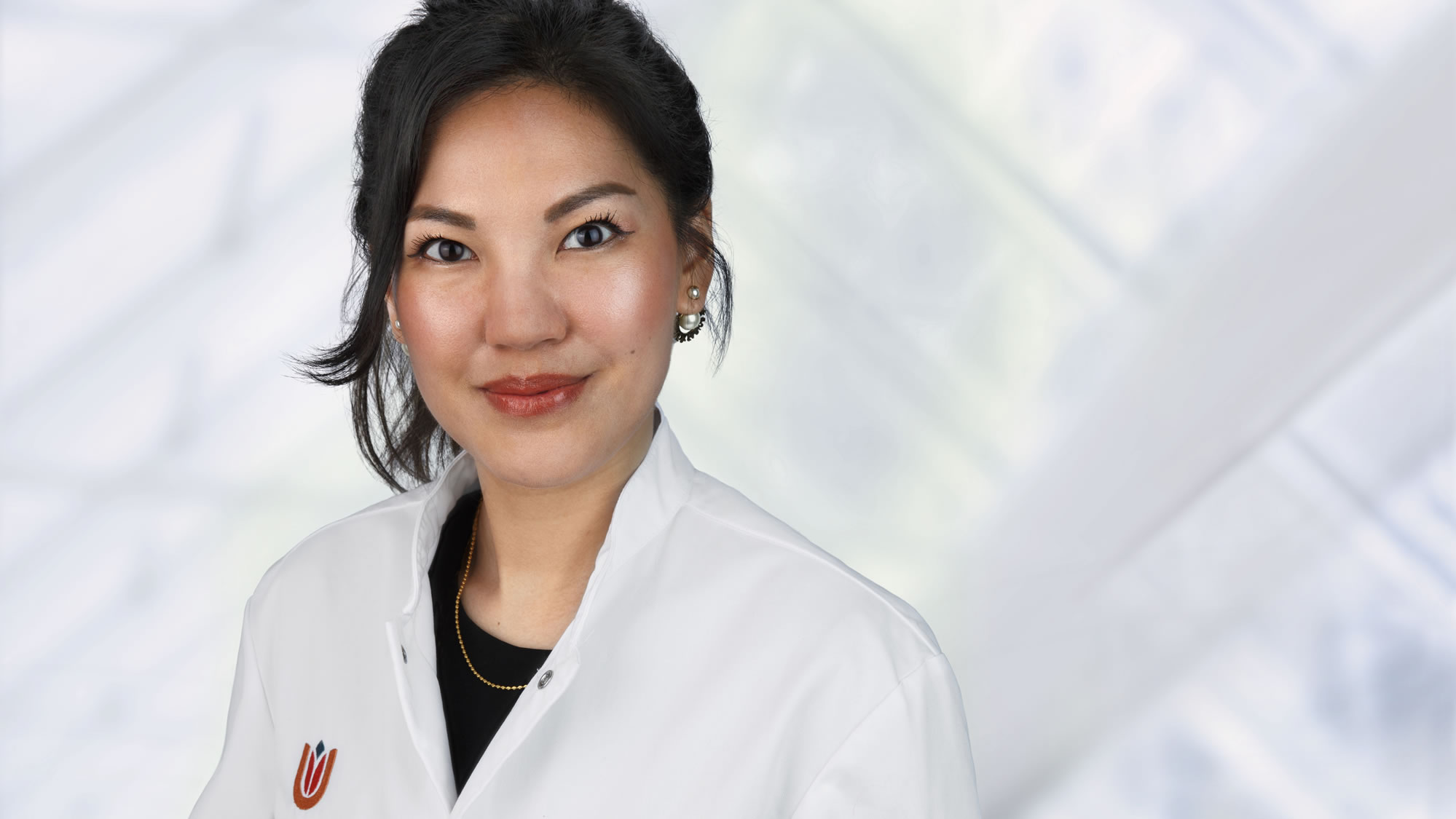Dr. Kak Khee Yeung
Dr. Kak Khee Yeung is a member of the Medical Advisory Board of Nano4Imaging. The vascular surgeon and researcher is affiliated with the Amsterdam UMC and specializes in the treatment of aneurysms and stenoses. She also leads a broad research effort on imaging with the MRI scanner in the operating room. Because X-rays are harmful to the patient and the doctor, and because we can see more details with MRI and there is no radiation.
Top female vascular surgeon wants to use MRI in OR.
As a female vascular surgeon, Kak Khee Yeung is regularly exposed to a high dose of radiation. Operations on ruptured aorta or an impending aneurysm, her specialty, often require many hours. ‘The X-rays from a CT scanner are downright harmful,’ she says. ‘That’s obviously true for the patient, but certainly also for the surgeons and the entire team who face it every day. We protect ourselves as much as possible, of course, but it would be a great step forward if we could use the MRI scanner to guide us during operations. That’s really much safer, because magnetic MRI is harmless.
More details
Safer, but MRI images also offer much more detail. Kakkhee Yeung, trained and obtained a PhD at the Free University of Amsterdam and regarded as one of the best vascular surgeons: ‘MRI reveals details that we cannot see with CT. This helps in navigating the vessels and also in making diagnoses during surgery. In all likelihood, we can use it to predict and prevent complications.’
Obstacles
Everything therefore argues for the advance of MRI in the operating room. This is also reason enough for Kakkhee Yeung to enthusiastically lead a broad investigation to map out the possibilities. “It’s not easy. There are physical obstacles. An MRI scanner is rather large, how do you handle it in an OR? Probably an OR would have to be remodeled for that. We also have a long way to go with visualization. How do you visualize everything exactly and how do the surgeons read the images? Other materials will be needed to work with. Metal, for example, is taboo. Switching from CT to MRI requires a lot of adjustments from the team around the patient. And there are high costs involved.’
Less invasive
Kak Khee Yeung (1984 Eindhoven) completed fellowships in China, Taiwan and the US and studied various treatment methods in vascular surgery. She works in Amsterdam, is also visiting professor in Romania and China and involved as promoter and teacher with aspiring vascular surgeons. She strives for the use of new minimally invasive techniques, less burdensome and less risky for the patient. This includes imaging with the MRI scanner. ‘Here in Amsterdam I get the opportunity to scientifically investigate new imaging techniques with a team,’ she says. ‘A great opportunity in a university medical center with all the facilities and support. We give ourselves five years to come up with conclusions. During that time, we investigate the technical aspects and talk to doctors and patients. We’ll shed light on the matter from all sides.’
Collaboration
In the research, Kak Khee Yeung’s research group is collaborating with various disciplines within the center and companies in the industry. One of these is Nano4Imaging, developer and manufacturer of an innovative guide wire with markers in the tip that is suitable for use with the MRI. ‘The tip is crucial in vascular surgery, especially when operating through the arteries. The current tips are not yet suitable for MRI scanners because of the material used. We are now investigating whether Nano4Imaging’s tip is suitable for our applications. We are working with several medical companies. We need the business community to be able to achieve results. With the development of materials, but also later on in the production and marketing of new products.’
Support
Since last year, Dr. Yeung has also been a member of the Medical Advisory Board of Nano4Imaging. Because we are in the same research together and because a young company also needs support from a scientific point of view. I think we help each other move forward. At the end of the day, it’s about our patients and everyone’s safety. I do expect the MRI scanner to have a function in the operating room in ten years’ time.’
Forecast
Paul Borm, CTO Nano4Imaging, is pleased with the collaboration. ‘We expect a lot from Kak Khee Yeung, because she is a pioneer in this field and therefore an example for other vascular surgeons. As a member of the medical advisory board, she can also present this in a broader business context. Together we are going on a journey of discovery because the book MRI in vascular surgery has yet to be written.’
https://research.vumc.nl/en/persons/kak-khee-yeung

